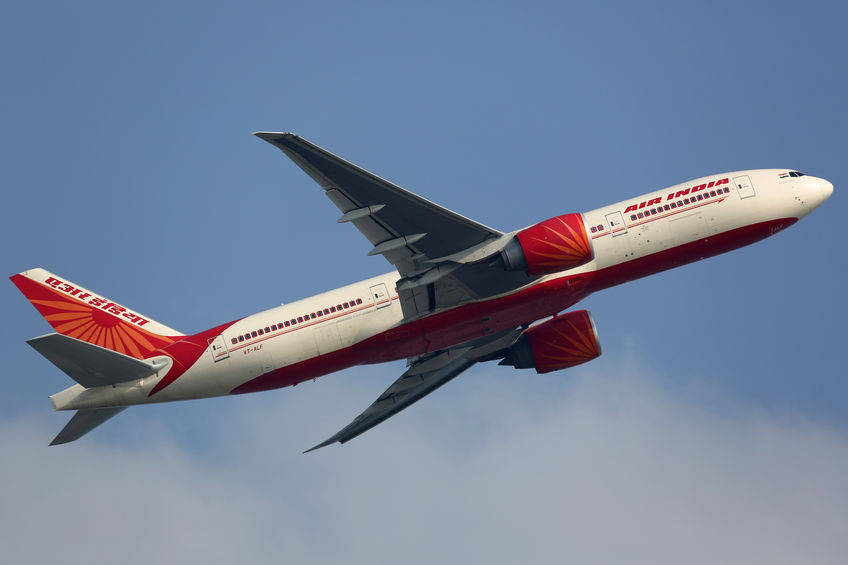Friday’s Air India Chicago – Delhi flight AI126 was delayed — because the FAA wouldn’t allow the plane to leave. Inspectors found missing tags displaying technical standard order numbers on seat belts of 44 passenger seats and 12 flight attendant seats.
Air India sent “seat belt tags from another Air India flight” — AI102 from New York JFK to Delhi that’s scheduled to leave around the same time as the Chicago flight — on board a Delta regional jet operated by Endeavor Air, most likely DL4095 to replace the missing ones from the O’Hare flight. The Chicago flight was booked full.

Air India Boeing 777-200LR, Copyright: boarding1now / 123RF Stock Photo
According to media reports the flight was delayed 8 hours. A quick check of several sites like Flightradar24, Flightstats, and Planefinder does not show the flight at all (although the flight comes up when searching for the occurrence aircraft). Air India’s website shows a departure delay of just 5 hours 21 minutes.

Here’s the thing about the incident. When you’re Air India, even if you think safety regulations are frivolous, you don’t say so. Except that’s exactly what they did.
“The seat belts were perfectly fine. Only some had tags worn out. This is an instance of impractical or irrelevant stipulations being imposed on Air India by FAA. However, we would take necessary action to ensure such things don’t recur. A lot of new seat belts have been ordered.” said the Air India’s spokesperson.
They continued their outrage at the FAA.
A senior AI official said that FAA is subjecting the Maharaja’s aircraft to stringent checks at all the stations it flies to — New York JFK and Newark, Chicago, Washington and San Francisco. “The checks have intensified in the recent past. While technically FAA was correct in pointing out the missing TSO tags, we told them that new seat belts have been ordered and the old ones will be replaced very soon. Still the aircraft was not allowed to take off till we got some belts from another of our aircraft in New York,” said the official.
The aircraft in question, VT-ALK, is named Chattisgarh. Four years ago it bumped the tail of a JetBlue Airbus A320 while taxiing to its gate on arrival in New York.
Air India can’t fly without seat belt tags. Lack of air conditioning isn’t a stopper. Even bird strikes aren’t a stopper. (Although failing to pair attractive crew with pilots can cancel a flight.)
Air India’s Chief Vigilance Officer is being charged with corruption.
This never gets old…


Yeah, Indians talking about frivolous regulations. The v guy would be out of work already of not for our being a government entity and saved by unions.
In my quite extensive experience with SAFA checks and equivalent (although not of FAA ramp inspections in particular but these are all based upon the same ICAO guidelines), inadequate placarding of safety equipment that is otherwise functional is a Class 2 action that should lead to notification to operator and regulator on first offence. It should not lead to a Class 3 action (viz. grounding until corrective action is taken) unless this is a repeat offence or there was a reason to believe that safety was directly at risk.
My guess would be a repeat offense (in which case Air India is completely at fault), but if not then US operators will likely be facing a similar check from DGCA when they next visit India – and the Indian inspectors can nitpick like no others.
The FAA is doing the right kind of enforcement. How should it choose aircraft/air lines to inspect? One reliable lead is whether the carrier is near bankruptcy. In that case, there is no ‘next period’ in which reputation matters. Expect cost cutting that is not instantly visible to get more prevalent. Passengers don’t have the expertise to inspect an aircraft for safety. Here, the FAA is acting as their agent. Good work.
For the same reason, it would be wise to avoid flying Air India right now.